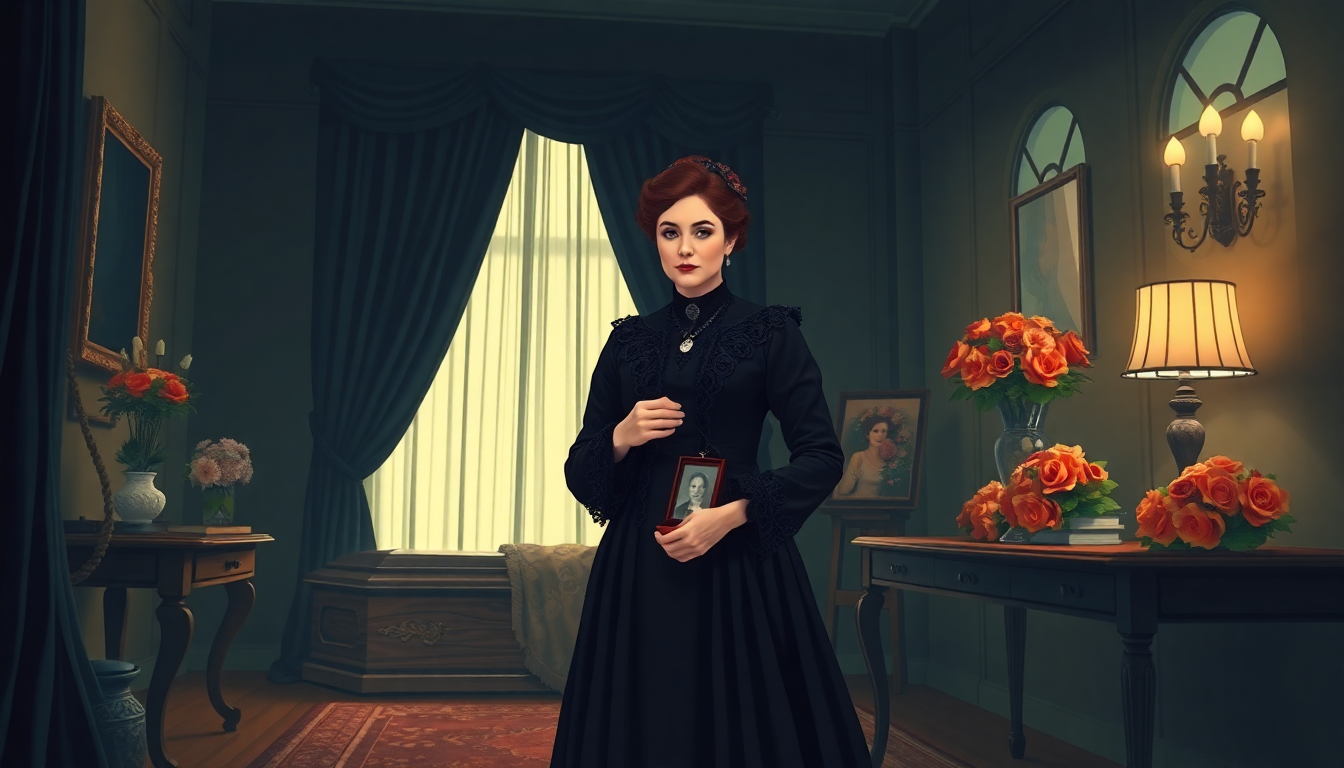The Melancholy Allure of Victorian Mourning
The Victorian era, from 1837 to 1901, was marked not only by its industrious advancements but also by its intriguing social customs, one of the most fascinating of which pertains to mourning rituals. Steeped in symbolism and meticulous detail, these practices were more than mere expressions of grief; they were a profound cultural tapestry that reflected the era’s complex relationship with death.
Grief Draped in Fashion: The Mourning Attire
One of the most striking aspects of Victorian mourning was the elaborate dress code. Driven by Queen Victoria’s own extended mourning after Prince Albert’s death, mourning attire became a societal norm.
- Widows’ Weeds: Widows were expected to wear black for up to four years. This outfit included a mourning dress, bonnet, and veil, all in somber tones.
- Men’s Mourning: Men’s mourning clothes were less elaborate but still strict; they donned black suits, often accessorized with black armbands or crape hatbands.
- Transition Through Colors: As mourning progressed, individuals moved through a palette of muted colors—shades of gray, lavender, and even white, which signified the gradual return to normalcy.
Macabre Mementos: Mourning Jewelry
Victorians had a unique way of memorializing the deceased through mourning jewelry. These pieces were often worn as daily reminders of the loved one.
“Mourning jewelry frequently included hair from the deceased, which was elaborately woven into bracelets, rings, and brooches, transforming personal loss into a tangible keepsake.”
- Hairwork Jewelry: Intricate hairwork was a common practice. Hair from the deceased was worked into intricate designs and sealed within lockets or woven into bracelets.
- Black Enamel: Pieces often featured black enamel or jet, a fossilized coal, symbolizing sorrow and loss.
- Engraved Inscriptions: Some items carried inscriptions of the deceased’s name, age, and date of death, making each piece uniquely personal.
The Mourning Period: Rules and Regulations
The length and intensity of mourning were dictated by social status and relationship to the deceased. This period was characterized by strict rules that governed behavior and appearance.
- Widows, as mentioned, adhered to a strict mourning period of up to four years.
- Parents mourning a child observed a one-year period of deep mourning, with half-mourning extending up to a further six months.
- Friends and distant relatives followed less rigorous protocols but were still expected to show outward signs of grief.
Post-Mortem Photography: Capturing the Last Breath
In a time when photography was emerging as a technological marvel, post-mortem photography became a poignant and practical keepsake. Families opted to capture images of the deceased, often posing them as if they were still alive.
“These photographs served as treasured mementos, preserving the visage of loved ones lost, often under the aesthetic guise of sleep or peaceful repose.”
- Infants and children, whose early deaths were tragically common, were frequently subjects of post-mortem photography.
- The deceased were sometimes posed with surviving family members, creating haunting yet heartfelt tableaux.
- Photographers employed various techniques to provide the illusion of life, such as painting open eyes or arranging the body in a lifelike pose.
Victorian Funeral Customs: A Grand Farewell
Funerals during the Victorian era were elaborate affairs, reflecting the status and social standing of the departed.
- Funeral Processions: Wealthy families often organized grand processions with richly adorned hearses, complete with plumes, draped horses, and intricate carriage designs.
- Invitation Cards: Notices of funerals were sent out on black-rimmed cards, another symbol of mourning.
- Funeral Feasts: Post-funeral gatherings featured special mourning foods and drinks, allowing mourners to bond in shared grief.
Legacy of Mourning: Lasting Impressions
The Victorian approach to mourning has left a lasting impression on contemporary death practices. While modern mourning is less rigid, many traditions have echoes in today’s rituals.
“The elaborate Victorian behaviors around death served as both a psychological coping mechanism and a societal obligation, intertwining personal grief with public display.”
Understanding these customs gives us insight into how our ancestors confronted mortality and found dignity in grief. The Victorians, bound by their strict norms yet fueled by deep emotion, managed to turn mourning into an art form—elaborate, meticulous, and profoundly human.
